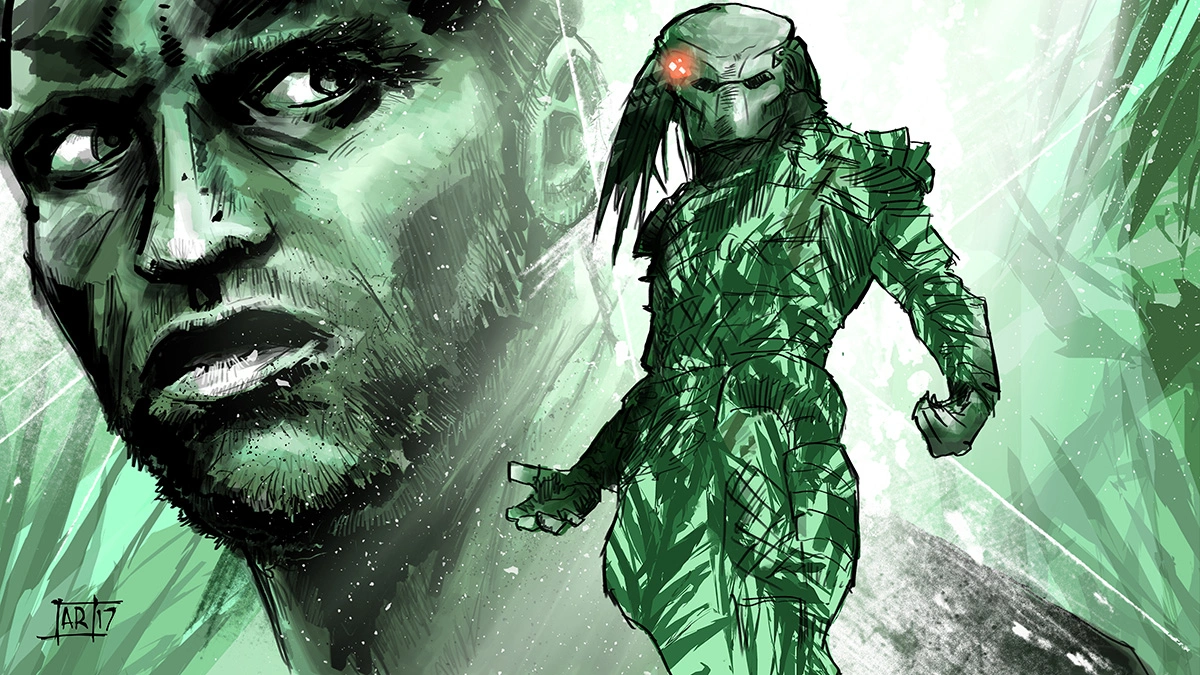
John McTiernan’s Predator is perhaps most fondly remembered for Arnold Schwarzenegger’s line, ‘Get to the chopper!’ But it also featured some incredibly memorable optical effects, crafted by R/Greenberg Associates and overseen by visual effects supervisor Joel Hynek.
These included a distinctive camouflage effect wielded by the alien Predator creature (appearing also in a monster suit designed and built by Stan Winston Studio), a heat vision-inspired Predator POV look, and several other optical effects.
Despite the challenging nature of the shots, and the challenging jungle shoot, the work culminated in an Academy Award nomination for Best Visual Effects (the nominees were Joel Hynek, Robert M. Greenberg, Richard Greenberg and Stan Winston).
In this interview, Hynek details the optical compositing tests that led to the eventual camouflage effect, the ill-fated red-suit-in-the-jungle approach to obtaining plates, and the almost ill-fated attempt at using a thermal camera for the Predator POV shots.
vfxblog: Can we set the scene – what were you doing at the time you began working on Predator?
Joel Hynek: I was head of the optical department at R/Greenberg Associates. We had a good relationship with producer Joel Silver having done Xanadu with him, doing live action streaks on an optical printer for that film. He thought that we would be a good fit to try and do the camouflage effect for Predator. At the time we looked at it as, ‘Okay, this is something where it has to be invisible but yet also visible.’
We just tried all kinds of things, and we had done a commercial for Southern Bell where where we had a person in a red suit and they were holding a green orb against the blue screen. I guess that’s where the light bulb went off of, ‘Okay, we’ll put a guy in a red suit and we’ll run around in the jungle because the jungle’s green and the sky’s blue,’ and so we tried it. We tried everything we could think of by pulling mattes off of that red suit. Sort of like blue screen in reverse, where your subject is the screen and the foreground is actually the background.
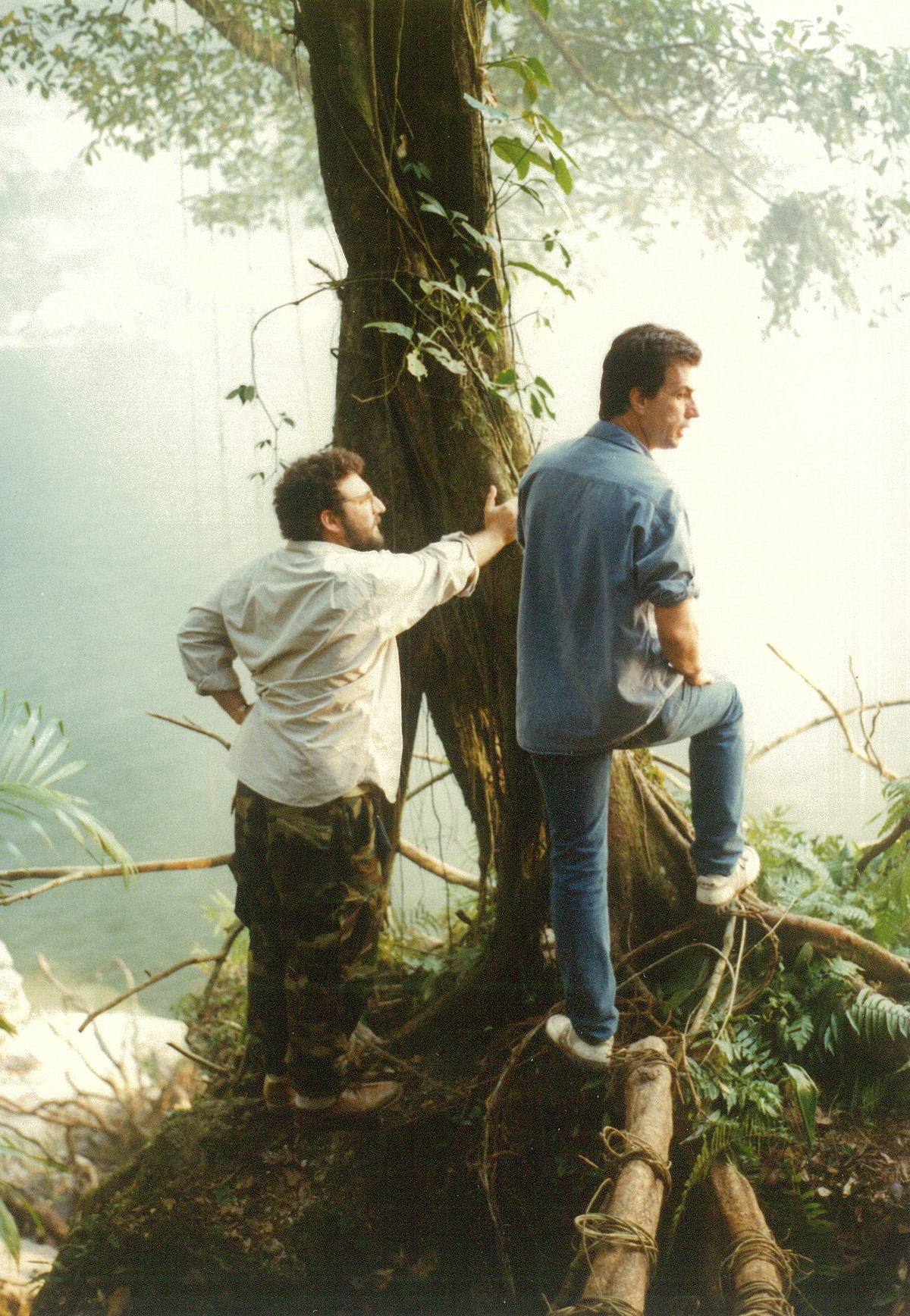
vfxblog: Was that something that worked for the camouflage effect?
Joel Hynek: Well, we tried freeze framing it, diffusing it, but it just kept looking like this cutout form running around. One day one of our optical printer operators, Eugene Mamut, through our CG department, came up with something. He was trying to do a slitscan effect on the optical printer, and so he was requesting mattes to be made by the CG department and they were basically just lines, lots of lines.
In effect, each piece of frame of film would be one scan line and so he managed one day to warp just a plain old background so that right in the middle it looked like a lens. It just got a little bigger in the middle. It’s something of course that’s so simple to do today but it was done optically, and we were like, ‘Ah, okay, but how can we do that with a human being?’
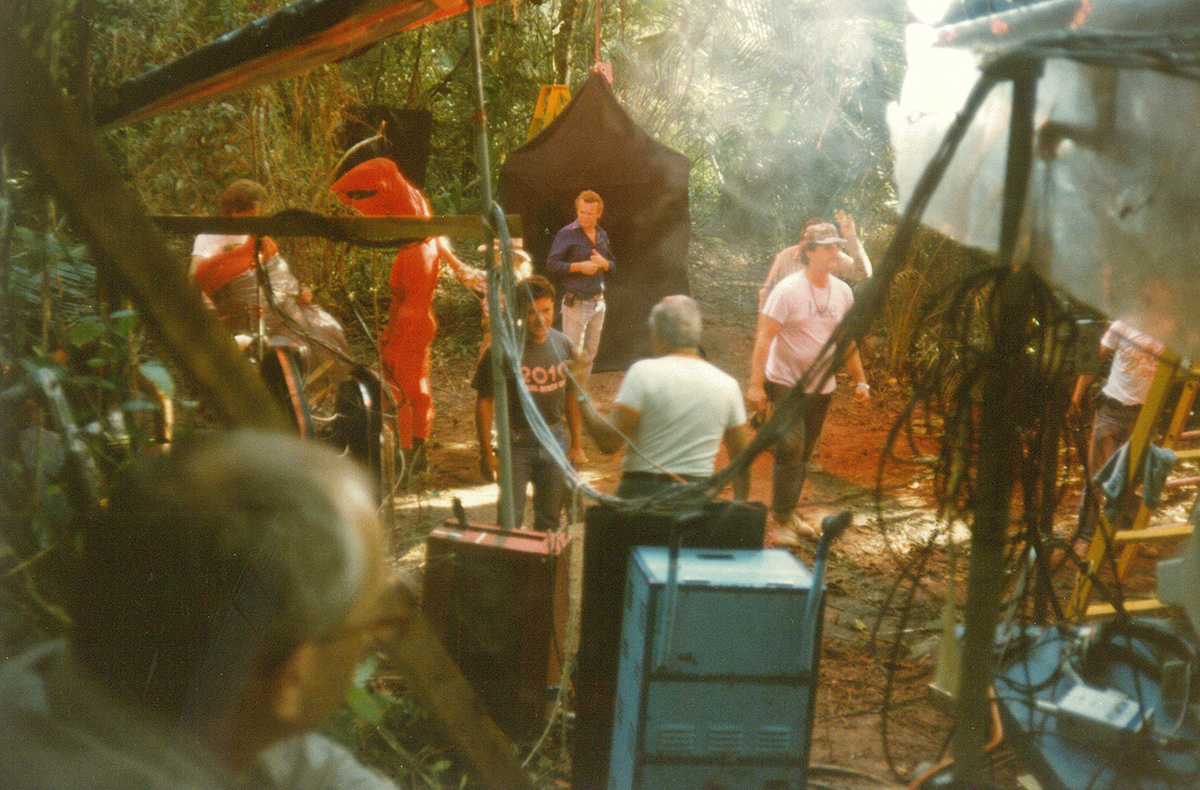
Now, I had worked out a method for making outlines around any kind of shape, simply by making what we call a black core matte and clear core matte, use the negative positive high-con matte, that if you offset it four times in the northwest, southwest, east-west and so forth directions, you come up with an outline. It’s great for doing outlines on titles but you can also do that to people, and that’s basically how we’d done the live action streaks for Xanadu.
We were just trying to figure out how to do that, and it was the day before Joel Silver was supposed to come and see what we’d been up to because we had done a test with a person in that red suit running around in Griffith Park.
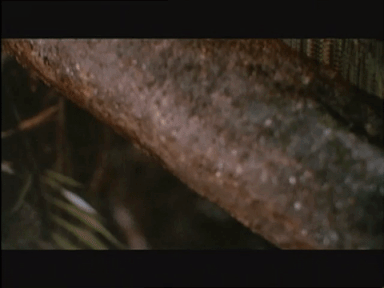
Suddenly a light bulb went off in my head when I realised that I could make a series of inline mattes instead of outlined, doing it the opposite direction, and make inline mattes – larger and larger and larger ones, and then use the one before it to print out the larger one so that you ended up with this set of concentric inline mattes. Then I remember just laying it on a piece of paper as we did our layout sheets for the optical camera operators.
I laid it all out, gave it to the operators, and said, ‘Here. Do this.’ I came back in the morning and there it was. That effect. We showed it to Joel Silver and he’s looking at it, and he’s not quite sure. Richard Greenberg was there with me and Joel says, ‘Hey Richard, what do you think of this?’ And Richard says, ‘It’s good. Good, Joel. Good.’ So Joel gets on the phone and immediately calls producer Larry Gordon in LA and says, ‘Okay, we got a movie, we’re going to do it,’ and that was it. That’s how that started.
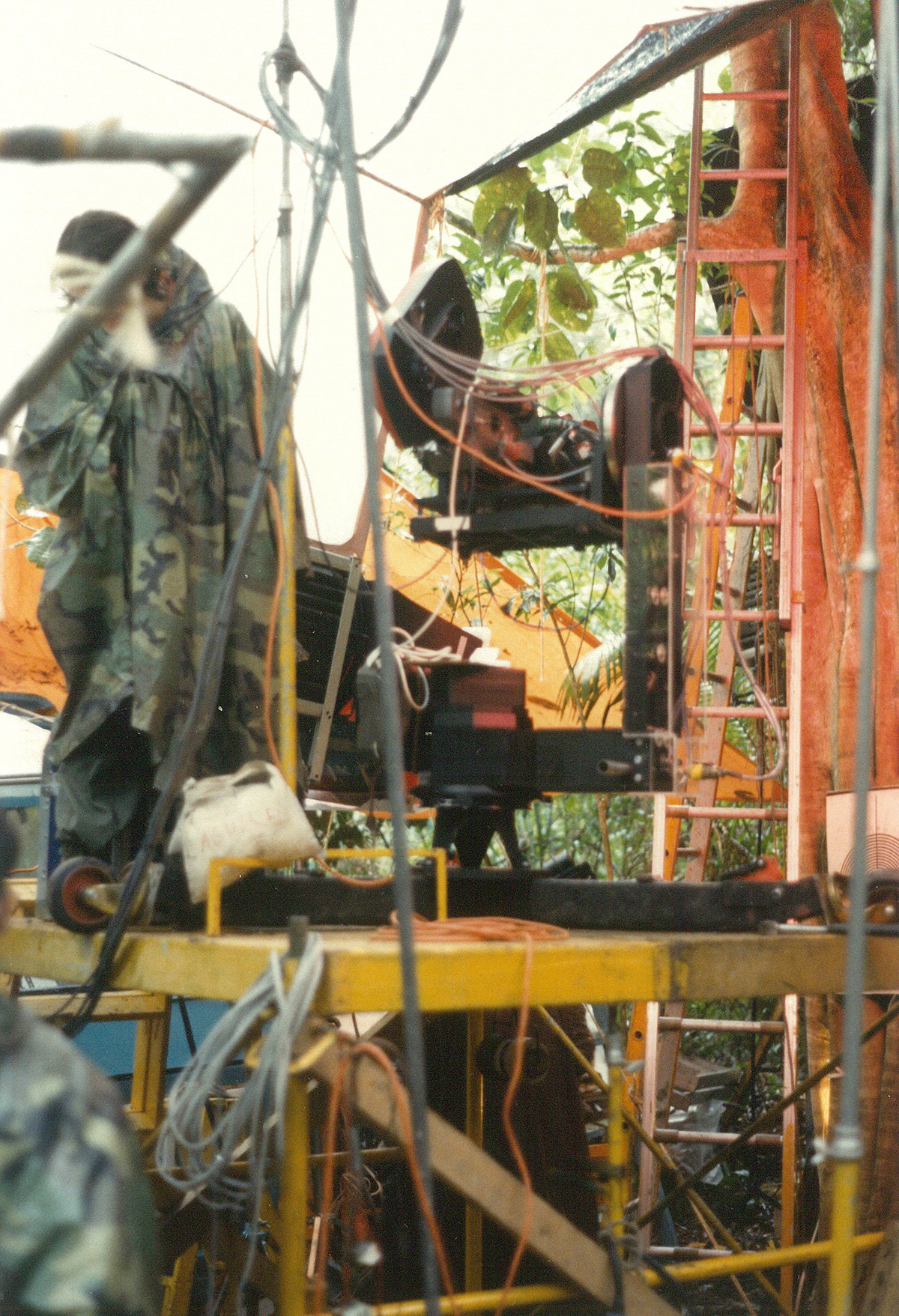
vfxblog: You obviously managed to find a solution, but I’m curious at the time, which is the mid-80s, whether you contemplated a computer graphics solution in any way?
Joel Hynek: CG was so much in its infancy that we really didn’t think about the possibility of doing anything with CG. I know the script had been bouncing around from studio to studio until Joel Silver got his hands on it. No one could really describe, I guess, what they wanted to see except that it had to be kind of scary and a visible representation of invisibility.
It all boiled down to just trying everything that you could think of on an optical printer. Of course, the inspiration for what we finally did actually come through computer generated scan lines which were then filmed out and used on the printer.
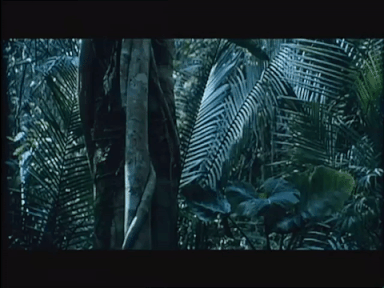
vfxblog: And what about the creature itself, which of course was a suit performer – were there any other ways it was thought of as being brought to life?
Joel Hynek: We were originally working with Boss Film on that. They were doing the physical creature at the time and John McTiernan had some very interesting ideas about a chicken / alligator type creature that would sort of walk with knees bent backwards. It was a very wild idea, in fact one idea was to have two people possibly with a wire assist to help support them from above.
In the end, the remarkable thing about Predator is that we started shooting without having seen the physical creature yet and the day it showed up, we put it up there and started shooting with it, and at that point Joel Silver looked at it, and I think maybe word reached back to Hollywood the next day and then Joel said, ‘We’re shutting down. We’re not doing this.’

vfxblog: Can I just ask about the suit, and it’s become part of special effects folklore that a red suit was made that matched the original suit, what was the story behind that?
Joel Hynek: Since we had to shoot a repeat pass to get the background of whatever was actually behind our red creature – you can’t see through him so we had to just do a separate pass – and so we were trying to do motion control in the jungle which required a refrigerated truck and it was just kind of nuts. I was also trying to pull a matte optically, and you really need a good saturated colour, so I was having them shoot red light into the jungle to try and illuminate our predator guy.
But during that shutdown period we’d taken the things that we’d shot and we realised, ‘Oh, we don’t need a red light,’ and, ‘Oh, we don’t need motion control, we can do it manual repeat motion control,’ where we have two monitors side by side and have the cameraman watch the monitor and try to do the best he can because it didn’t actually have to be perfect.
It ended up making a pretty good effect with that, but little did I know others were trying very hard elsewhere to try and come up with the Predator effect in different ways. They were trying that thing when you point a camera at a monitor and you get this endless series of frames that kind of looks like the Predator camouflage effect. They were trying that but they couldn’t duplicate it. So I ended up calling John McTiernan and saying, ‘Hey, we don’t need motion control. We don’t need red light,’ and he was very happy.
Then Stan Winston produced the next creature, which was such a beautiful creature, and Joel Silver said, ‘Okay, we’re going to go to the real jungle now. We’re going to go down to Palenque in Mexico and really do this.’ (Click here for details on Stan Winston’s creature work).
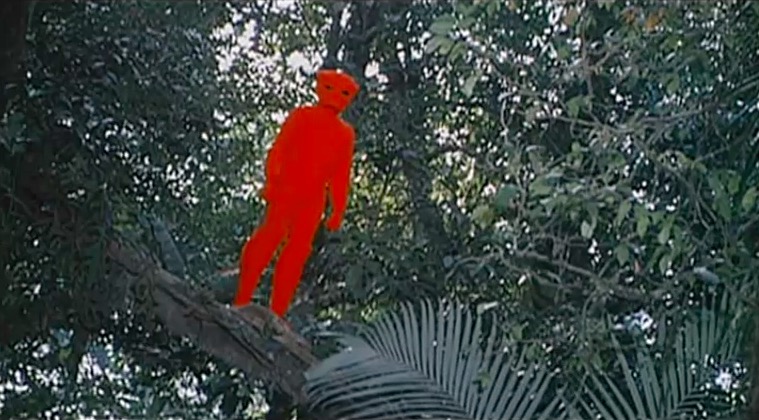
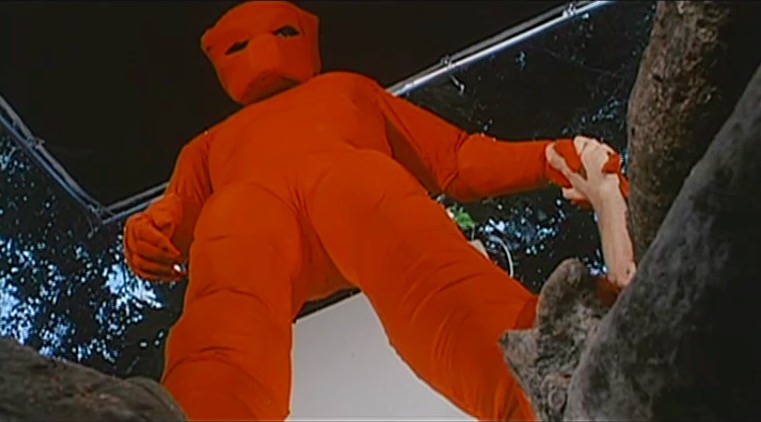
vfxblog: With that red suit too, there’s stories about Jean-Claude Van Damme wearing it in the shape of the original design, and not being very happy about his role. Was there also a red suit made in the shape of the new creature?
Joel Hynek: Yes, it wasn’t super detailed. It had a larger head and it was more human shaped than the original one. We even tried making a red suit for a monkey but the monkey didn’t like that too much. It just ran up into a tree and hid.
So…Jean-Claude Van Damme. He kept wanting to have the alien be essentially a kick boxer because he kept wanting to kick all the time and I’ll never forget being in Joel Silver’s trailer and he wanted to put the word out, he wanted to talk to Van Damme. So Van Damme comes into the trailer and Joel says, ‘Look. You can not keep doing that kick. The Predator is not a kick boxer.’ And Van Damme said, ‘No I have to do that. He must do that.’ Then Joel Silver said, ‘Well forget it then. You’re out of here. Goodbye.’ And Van Damme said, ‘Kiss my balls,’ and stormed out and that was the end of that.
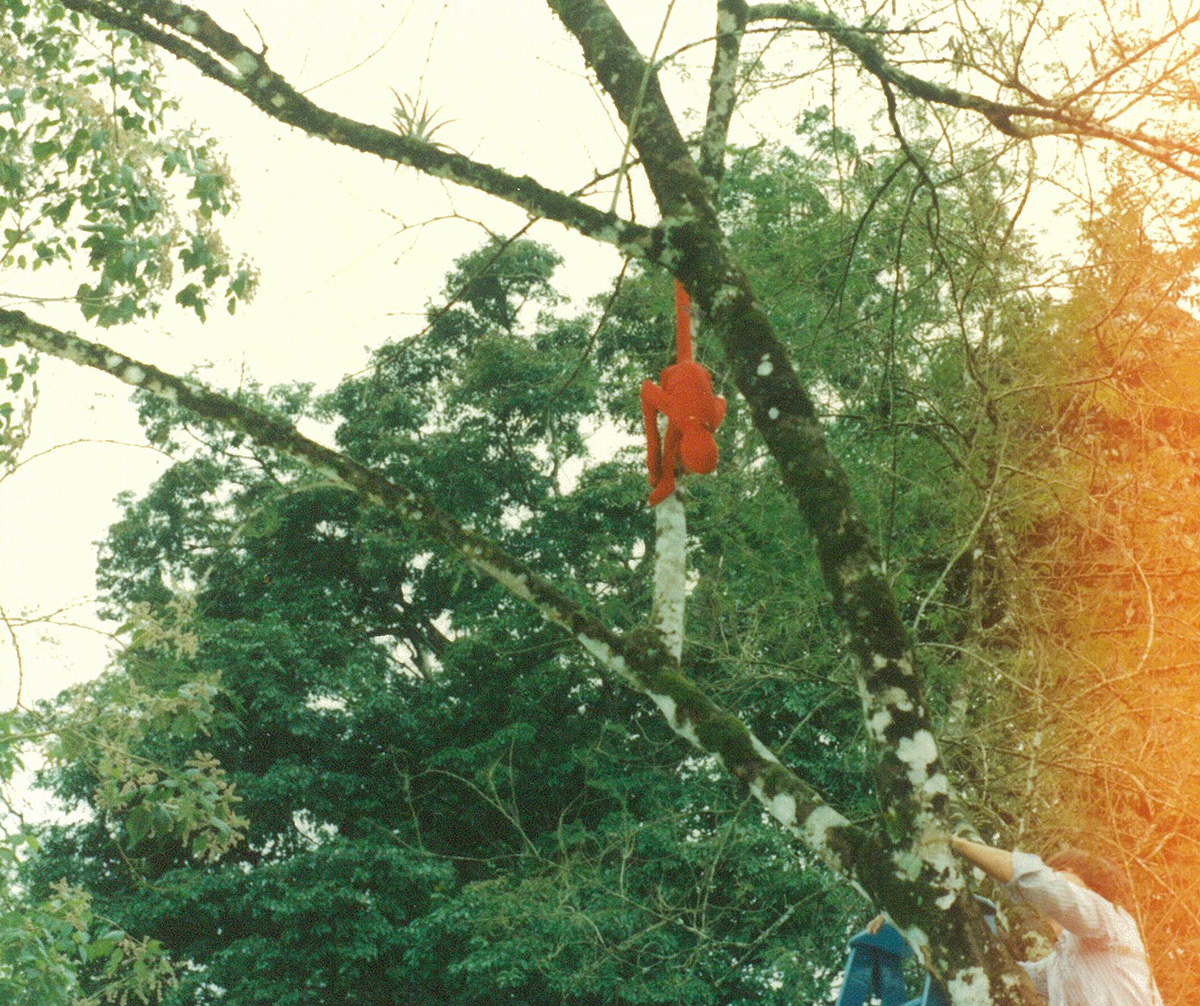
vfxblog: In terms of the final camouflage effect, did you continue to refine the look and did you in the end have any different looks depending on what shot it was?
Joel Hynek: It did vary a bit. We had developed a printer – in fact, I got an Academy Award, an engineering and design Academy Award, for developing an optical printer that you could do roto-positioning on. Let’s say you were constantly changing the position of something or the size of something, it would remember that so you could just do it over and over again.
For some of the earlier shots, since you were taking in these concentric inline mattes and for each one of them, we would reduce the background a little further, a little further. But we would realise that of course as you kept reducing the image and if the Predator was moving, you’d have to keep repositioning where it was for each different plane because that’s a size change needed to change how much you moved it.
That was kind of a painstaking process, but again, Eugene Mamut, optical printer operator, was dedicated and did a beautiful job on some of the shots where the Predator is running across the frame of using the roto-positioning tool to keep it all aligned, to be very smooth. In one of the earliest shots where we were just winging it, not going to that extent, the imagery sort of wiggles around. In the shot, if you remember, it’s a shot where I think Carl Weathers looks at the creature, the Predator’s eyes flash yellow, and then the image sort of wiggles around him a little bit and I thought, ‘Oh gosh. That’s giving it away!’ But Joel Silver said, ‘No, that’s cool. That’s what the Predator wanted to do. That was the intent.’ It survived.
But the shots did change over the course of the movie. In optical printing, and in making split screen mattes or in this case it’s a set of concentric inline mattes, we were trying to make them not have lines. It was very tough and it’s always a matter of adjusting exposure of each of your elements so that they would bleed just the right amount to make a perfect split. In some of our shots, you can’t see the lines at all. It’s just completely invisible. And other shots, they are quite visible. At times, the fact that the lines were visible when there isn’t much going on in the background since it’s dark, were actually a help.
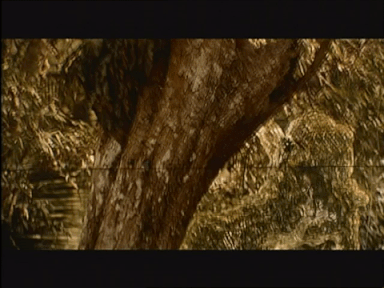
But we were always trying to get the perfect set to work. There’s a shot where – it’s the guy who gets killed first – he’s under a tree, he’s looking up at the Predator, and it was one of our perfect matte sets and you couldn’t tell there was anything there until it moved. That was our goal and why there is a variability of look throughout the film.
vfxblog: The camouflage effect feels like one of those visual effect shots where you just don’t know how it was done. I even remember thinking at the time, was that computer generated? Maybe? And I wonder if you feel whether that is why these shots have really had a lasting impact?
Joel Hynek: Yes, it has had a lasting effect. It is optical, it’s film, it’s chemistry in motion. You’re not bringing a different technique or a different colour space into it, it’s all the same colour space, and the motion is all generated from a human. The matte, the additional form, it’s all coming from the silhouette of that red suit so it’s organic. I think that’s why it looks good and I guess why people are puzzled as to, ‘Well, how’s that done?’ It looks computer generated but at the same time it doesn’t.
vfxblog: Can we talk about the Predator POV shots. They relied on thermal imaging, didn’t they?
Joel Hynek: At R/Greenberg Associates, we would do commercials and we’d work on features. We had done a commercial with the heat camera. I think it was somebody’s house, it was about insulation, and so when the notion came up for the Predator’s heat vision, we said, ‘Oh okay, let’s use the heat camera.’ But it was a low res image, half standard video res at the time so it was about 250 lines and it had this sort of natural decay because of the heat – it would actually heat up the sensor a little bit and then it would slowly decay. That gave it all an interesting abstract, impressionistic look. I was really worried that people would not know what they’re looking at, so I was like, ‘Okay we’re also going to have to shoot a filler background and combine them.’
To do that, it had to be shot from the same perspective so we worked out a beam splitter where the heat camera would point down onto this 45 degree angle mirror and then shoot out horizontally and then behind the mirror we’d have a film camera shooting straight to it. We set these two images, the heat image and the optical image, and then manipulated the optical image. It was essentially a blue negative image icon made from that but it had all the trees in it so you remained oriented, you knew what you were looking at. At one point, Joel Silver got a little frustrated, ‘Why are you going to all this trouble?’ And I just had to keep pointing out, ‘Joel, without that, you’re not going to know what people are looking at unless you’re doing close up of the face.’
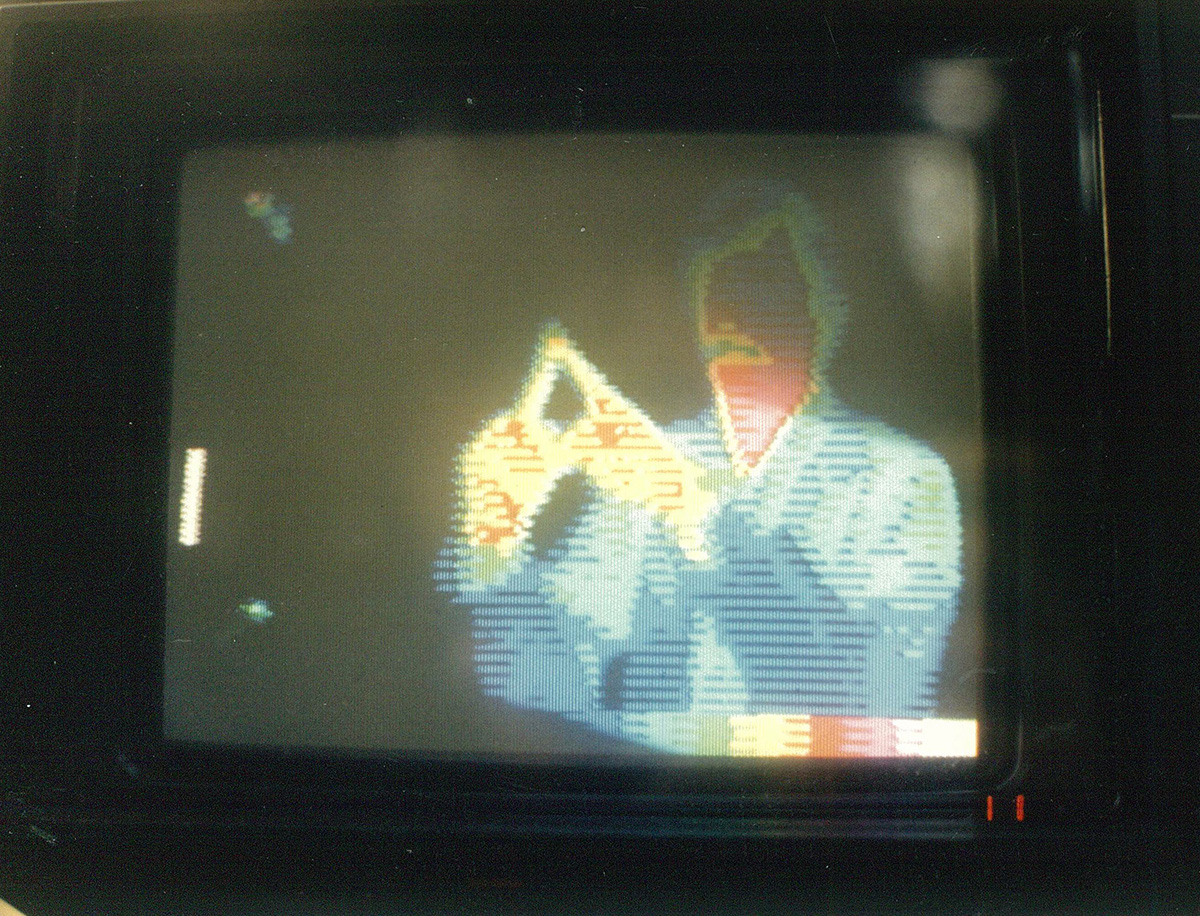
We built one also for a Steadicam, this beam splitter. Then it became slightly tricky because you were essentially lighting with heat. You want something to really stand out? Well, you hit it with a hair dryer and it’ll be bright.
vfxblog: What kind of manipulation did you end up doing on the final image?
Joel Hynek: Well, speaking photographically, we didn’t have the means to actually record the heat vision on videotape. It was not possible. So we got a van and set up a little recording setup in this truck, with a monitor and a film camera. Whenever we were doing heat vision there was always this long cable, video cable, running to the heat camera. And then that was being filmed, real time, off this monitor. That probably also contributed to its film look – that it was on motion picture film, even though it was being recorded from a monitor, but it wasn’t video tape.
vfxblog: Wait, you had a van doing this? In the jungle?
Joel Hynek: Yeah!
vfxblog: What were the logistics of all that?
Joel Hynek: First they built this big wooden platform, kind of like a lathe bed but but out of wood, and then we mounted the camera and then a monitor, and then in the van all the windows are blacked out so it’s all dark in there. It wasn’t that hard but you always had to make sure you had a long enough cable going to the heat camera. I do have a funny story that goes along with this and I was a little concerned when we were going to this approach that, shooting in the jungle, it might get so hot that you wouldn’t be able to distinguish a human in the background.
On a stage, we built this plastic enclosure with a screen, a plastic sheet, and put a human in there and just started heating it up and discovered that at around 94 degrees, you can no longer distinguish a human being from a background. It just becomes this kaleidoscope of colours. I sent Joel Silver a memo saying, ‘Joel, we’ve got to be careful because after 94 degrees we’re not going to be able to see the human.’
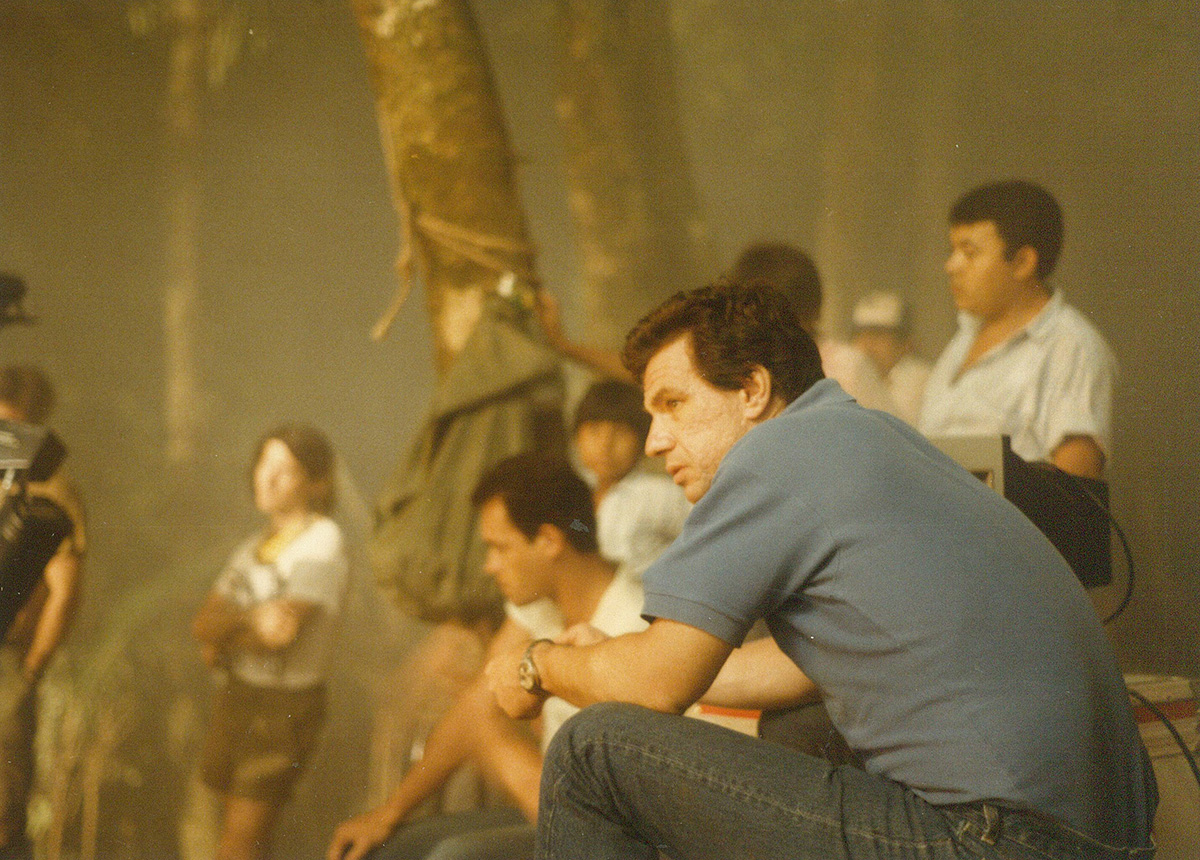
So, I don’t hear anything back. We’re down at the jungle, it’s the first day of heat shooting, and of course it’s hot. They fire up the camera and it’s just a kaleidoscope of colours. You can’t see the people. Joel Silver starts screaming at me and says, ‘What the hell is going on here? This is a breach of contract! And I said, ‘Well Joel, didn’t you get my memo? I told you if it was more than 94 degrees you weren’t going to be able to see a human.’ And he says, ‘So what are we going to do?!’ and I suggested, ‘Well you’re going to have to cool down the jungle.’ Then he goes, ‘What? How?’ and I said, ‘With water. Spray it with water.’
So, we pack up. Next day, we try it again. They brought in these water trucks and were spraying down the jungle. We fire up the heat camera and, it was still hot, and it was still just a kaleidoscope of colours. Joel Silver’s screaming at me again, ‘Breach of contract!’ But then I realised that the water trucks that they had brought in are painted black and they’d been sitting in the sun. So they’re actually hosing it down with hot water. I said, ‘Okay Joel we’re going to have to get cold water. Ice water.’ The next day, they show up with these trucks with ice water. They hose down the jungle, and it works beautifully. People stand out excellently and we were good. But by then of course, as nature would have it, after that it wasn’t hot anymore, the weather had cooled down and we hardly had to use the water again at all.
vfxblog: Another of the very memorable effects in Predator was the ‘electricity’ effect over the creature’s body when he’s damaged. Although in those days I think there were lots of great hand-articulated lightning effects, this felt different. How was it done?
Joel Hynek: It was done with the standard approach, it was animated. It was hand drawn on paper and then photographed on the animation stand, and then optically combined with the Predator. It’s just really a skill. One guy in particular, his name is Don Poynter, he was animating that. He really had a feel for it. In fact, there’s one frame in there where he claims he spelled out his name in electricity on the Predator. I can’t say I’ve ever found it.
We also had a spark coil, an Oudin coil, something I’d made a long time ago, so we brought that in and used it as reference. It’s similar to a Tesla coil, so he’d watch that for a while.
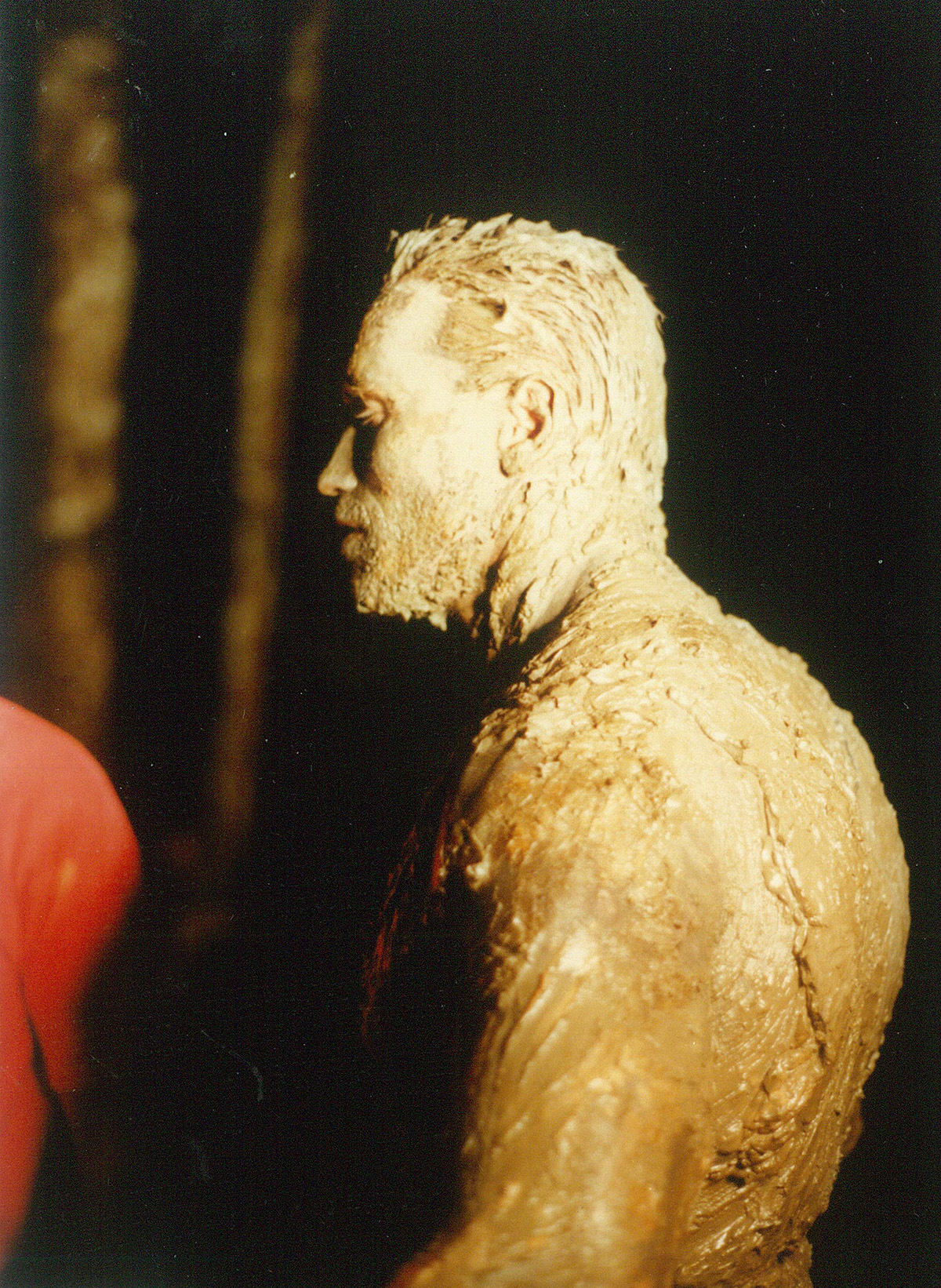
vfxblog: Were there any other shots or effects work that you wanted to share from the project?
Joel Hynek: There was one other effect that is an optical / chemical effect, and it’s where the Predator reveals himself or covers himself up. So, there are a few times where he sort of lights himself on or off – it was an effect we call high con-fade wipe. It’s where on the optical printer, you would just vary the exposure of what you’re shooting to go from nothing, so the film’s totally clear, to totally black, and in this process, the mask or the density would follow the lighting contours on your subject, in this case, the Predator.
So we would shoot him blue screen to get his matte and then just based on the way he was lit and his own brightness variations across his body, as we went from 0 to 100%, the wipe would sort of follow the contours of his body. So it looked 3D but just because it was really where the light was falling on a 3D form. It looked better than I expected it to look because of that. That’s another photochemical thing that went along with the look of the film.
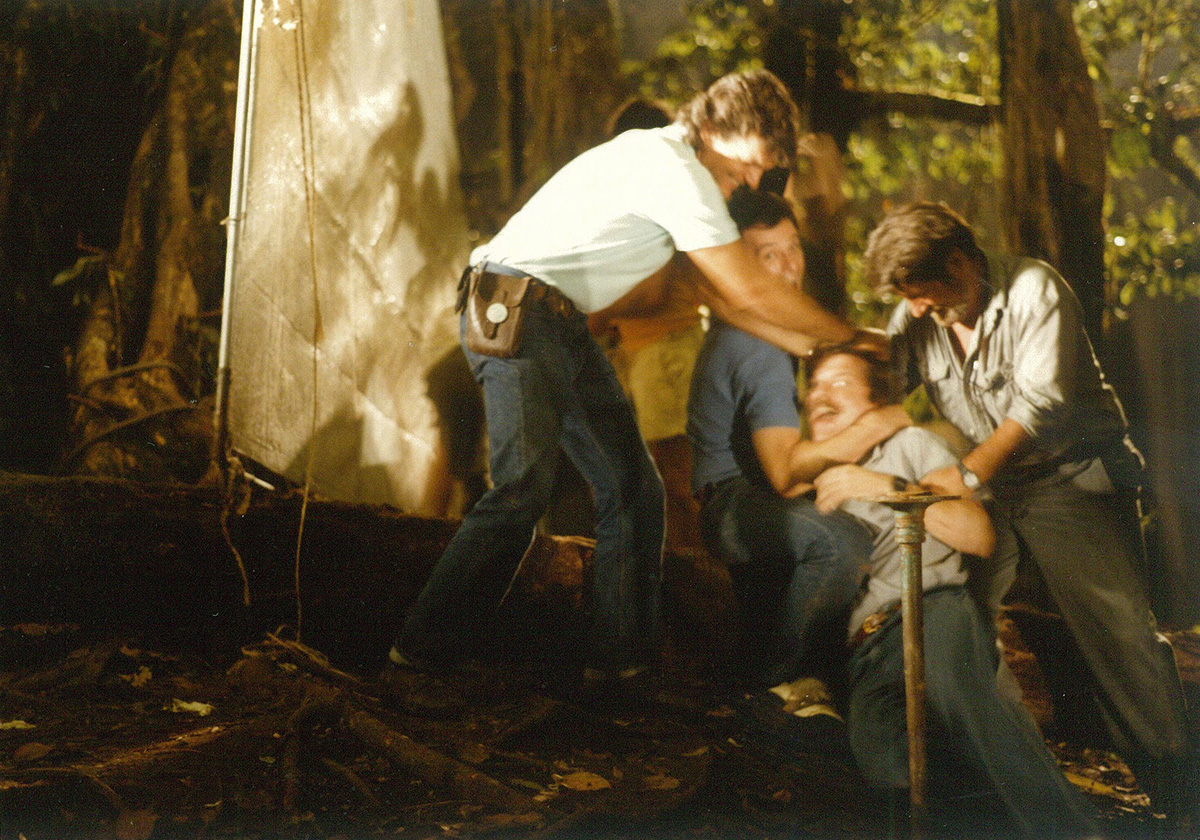
Thanks to Joel Hynek for this great interview. Don’t miss the Cinefex issue on Predator (#33) for incredible detail and imagery.